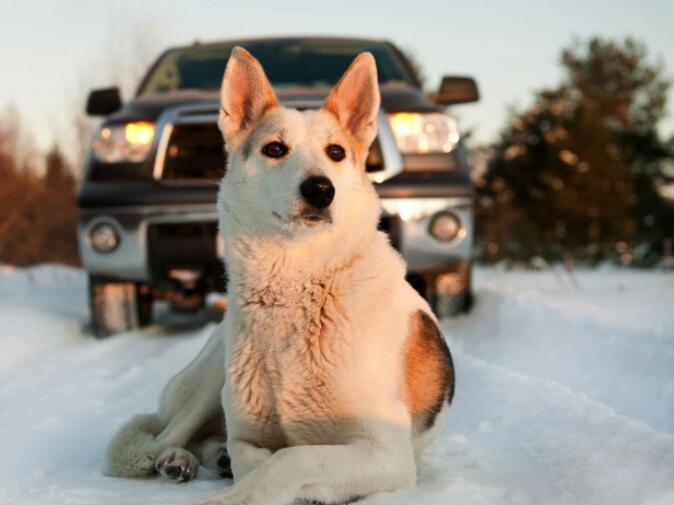Pugs, with their lovable wrinkled faces, are a popular dog breed admired for their charming appearance and affectionate nature. However, these little darlings are susceptible to several health issues, many of which are genetic in origin. While some conditions are incurable and inevitable, others can be prevented or managed with proper care and regular veterinary check-ups.
Cancer
Cancer claims the lives of many pugs, with oral melanoma and mast cell tumors being common types. A study in Veterinary and Comparative Oncology reported that 56% of pugs develop MCTs, with other breeds like Golden Retrievers and Labradors also affected. These tumors can appear as red or swollen lumps that fluctuate in size. Unfortunately, this is often the only noticeable symptom until ulcers form internally, leading to vomiting and loss of appetite.
Treatment typically involves surgically removing the mass, followed by chemotherapy or radiation for aggressive tumors. Oral melanoma, another common cancer, is particularly prevalent in pugs due to their heavily pigmented oral mucosa. Signs include bleeding masses in the mouth and swelling, with treatment involving surgery and potentially chemotherapy or radiation.
Patellar Luxation
This condition, characterized by a slipped kneecap, is congenital or can result from trauma. It causes a skipping gait in pugs. While some dogs can live with the condition, it can lead to arthritis and pain. Surgery is often recommended to reposition the kneecap, but if not feasible, weight management and glucosamine supplements can help alleviate symptoms.
Brachycephalic Obstructive Airway Syndrome (BOAS)
Pugs belong to the brachycephalic group, meaning they have short muzzles, which predisposes them to BOAS. This is a chronic respiratory disorder that can reduce their lifespan. The syndrome is characterized by abnormalities like stenotic nostrils, an elongated soft palate, an enlarged tongue, and a smaller windpipe. Dr. Lindsay Butzer from Clint Moore Animal Hospital illustrates the challenge pugs face due to their anatomy, comparing it to a frog’s mouth. Heat sensitivity is a major concern, as their obstructed airways make breathing difficult.
According to a study published in Canine Medicine and Genetics, pugs are 54% more likely to develop BOAS than non-brachycephalic breeds. French Bulldogs, Boxers, Boston Terriers, and Shih Tzus are also at risk. To assess your pug’s risk early, examine its nostrils; a scale in PLoS One can guide you. Overweight pugs and females are particularly vulnerable.
Once they reach a year old, have your pug checked for BOAS symptoms, which include difficulty breathing during exercise, heat sensitivity, and gastrointestinal disturbances. Mild cases can be managed with limited exercise, weight control, and avoiding stressors like high temperatures. In severe cases, surgery may be necessary to improve airflow.
Legg-Calvé-Perthes Disease and Hip Dysplasia
Before discussing the specifics of these two hip-related issues, it’s essential to understand the anatomy. The hip joint in dogs is a ball-and-socket joint. For various reasons, this joint can be compromised, leading to mobility challenges.
Hip Dysplasia: A genetic predisposition means that about 71% of pugs will have some degree of hip dysplasia by adulthood. In this condition, the ball and socket don’t develop synchronously, leading to a loose joint. Symptoms become more pronounced as they age, typically between 1-2 years. Signs include limping or difficulty in getting up. If left untreated, it can lead to osteoarthritis. Treatment ranges from NSAIDs and supplements to physical therapy and, in severe cases, surgery.
Legg-Calvé-Perthes Disease: This is another hip issue, though its cause is linked to reduced blood flow to the head of the femur bone. Over time, this leads to degeneration of the hip joint and subsequent arthritis. It’s noticeable due to lameness, dragging of legs, and pain. Diagnosis is typically through X-rays. Treatment often requires surgery, followed by rigorous exercise and physical therapy. In milder cases, pain management and cold therapy can help.
Eye Issues: Corneal Ulcers, Entropion, and Dry Eye
Pugs’ protruding eyes, endearingly called “bug eyes,” are vulnerable to various issues due to their size and shape.
Entropion: This is an inherited condition where the eyelids roll inward, causing eyelashes to scratch the cornea. This constant irritation can lead to corneal ulcers – wounds on the cornea caused by external irritants like dirt or even self-inflicted scratches. These ulcers can be painful, causing dogs to squint, rub their eyes, or keep them closed. Treatment varies but can involve antibiotics, pain medications, and, in extreme cases, surgery.
Dry Eye (KCS): Pugs are genetically predisposed to chronic dry eye, which can lead to redness, irritation, and thick yellow discharge. Long-term care includes daily drops to stimulate tear production and lubricating drops every few hours. Preventive measures include avoiding exposing their eyes to debris and considering dog goggles during walks.
Skin Fold Dermatitis and Infections
While their wrinkles might be adorable, they can trap moisture, leading to bacterial growth and dermatitis. This inflammation can progress to pyoderma, characterized by pus, swelling, and redness. Staph infections, transmissible to other animals and humans, can also occur. Symptoms include fever, loss of appetite, and lesions. Daily cleaning with medicated wipes or damp cloths can prevent many infections. If infections occur, treatment involves antibiotics, antifungals, and possibly medicated bath products.
Pugs, a breed known for their wrinkled faces and bulging eyes, are unfortunately one of the unhealthiest dog breeds due to the way they’ve been bred over the years. Their defining characteristics, while cute, are the very reason they have so many health problems. The British Veterinary Association even put out a press release in 2016 urging people to reconsider adopting or purchasing brachycephalic breeds such as pugs.
One of the biggest health concerns for pugs is their propensity for obesity. Pugs are at a heightened risk of obesity so the best food for the breed would be something that helps manage their weight effectively. A low-fat, low-calorie gastric diet is often recommended for pugs as they gain weight really fast and you need to keep them as lean as possible with their broad body type. The University of Cambridge created a visual of obesity in pugs to help you scale what’s normal.
Another issue pugs face is excessive shedding. Pugs have short, coarse coats and shed year-round. Some pugs, mostly non-black pugs, have double coats (two layers of fur) so they shed even more. The shedding tends to increase during spring and summer months as pugs get rid of their winter coat. To help lessen the pesky hairs, it’s recommended to use a deshedding brush and shed-control shampoo for your pug.
Brachycephalic breeds like pugs tend to have a shorter lifespan, typically living to around 8.6 years. However, according to The American Kennel Club, pugs have an average lifespan of 13 to 15 years. Despite this, the leading cause of death for pugs is cancer, which typically occurs when they’re older. Because cancer can spread to other organs, early detection is vital.
Flying with a pug can also be risky. Pugs don’t do well in hot conditions or stressful situations. Because they have a smooshed face and difficulty breathing, if they become stressed out on a plane this can cause an anxiety attack that affects [their] breathing and they can die from that. Also, if the airline requires them to be put in a bag under the seat with low oxygen this will also impair breathing and can be detrimental to the pug. Many airlines such as Delta, United and Swiss have no-fly policies or restrictions against flying with brachycephalic breeds. If you do decide to fly with your pug, speak with a vet about what you can do to make the journey safer for them.









